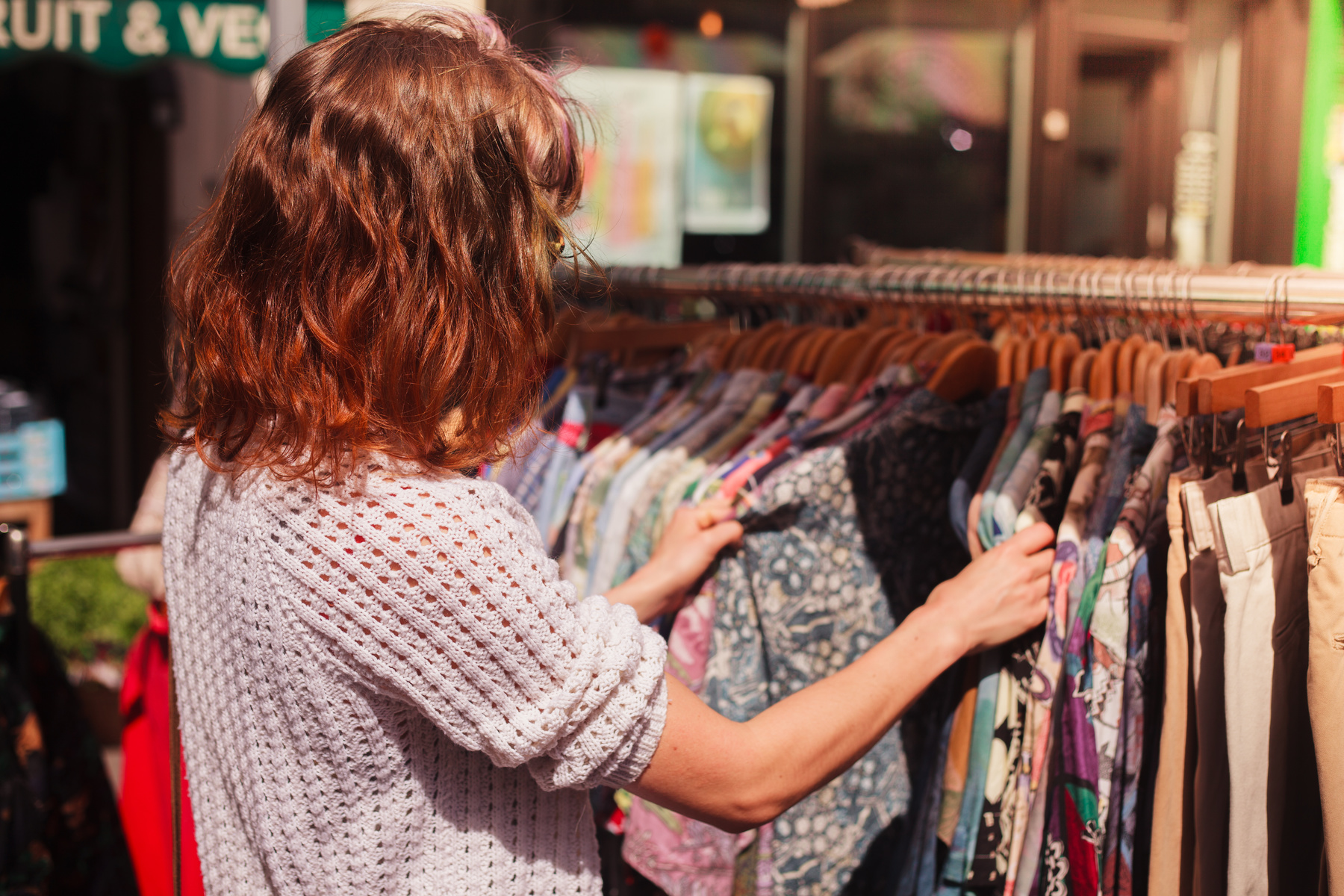Tips for Vintage Clothes Shoppers

Levis denim jeans, and pristine silk pillbox hats find their way into the hands of seasoned vintage shoppers without fail. To improve your own vintage shopping experience, follow these tips gathered from expert vintage shoppers who regularly score prized goods.
Find Your Start
When starting to shop for vintage clothing, there is a lot of information to take in. Years of knowledge and eras of style and makes and models and fits and so on can be overwhelming. To help simplify the process, remember to take a basic approach to vintage shopping: aesthetics and niche.
Find Your Aesthetic
There is certainly something to be said for purchasing based only on aesthetics. Take a look around, find what you like, and buy it. This approach to vintage shopping is more manageable but is not as lucrative. Buyers often overpay and undersell because of a lack of research.
Aesthetics-only shopping is more acceptable at the beginning of your vintage journey. If you are unsure what your niche is, picking and choosing vintage items based solely on what you like will help you build a profile of interests. Once you create a better profile of what you enjoy, you will develop your niche and research accordingly.
Find Your Niche
Most connoisseurs tend to focus on a particular style, era, or item in which they specialize. Focusing on a specific niche allows for a quick scan to determine whether the piece is available. If they do find a match, fakes are easily noted, thanks to their specialization. Further, learning all there is to know about a particular niche ensures that the buyer is well aware of pricing and popularity trends, so they are less likely to overpay for or undersell an item.
Find Your Peers
The networks of vintage shoppers are vast. For each niche market, including even the most obscure, groups of fast-shopping peers are ready to find their next vintage treasure. Internet groups, trade shows, or pop-up vintage markets provide opportunities to build connections. Often, group members will share their trade secrets and shopping spots across the nation.
Find Your Stores
There are many different places to shop. Many professional vintage shoppers prefer to work through boutiques. The prices are higher, but they verify, wash, and sometimes even fit the clothing for you. Some shoppers prefer thrift stores. The thrill of the search is what vintage shopping is all about to them. They use their skill and research to determine if they have something vintage and what it may be worth. Others look to eBay or other online stores to seek out vintage goods. There are also pop-ups and trade shows that offer vintage goods.
Find Your Goods
Once you have identified something that you think is vintage and consider purchasing it, check the item against the price. If you think the price matches the condition of the piece, proceed with your purchase. If not, make sure you bring cash to negotiate a better deal based on the item’s condition. check for the following details to negotiate a better price
- Holes, rips, tears
- Noticeable stains or mold spots
- Missing buttons, clasps, zippers
- Identifiable tags with branding
- Tight stitching
A Special Note on Vintage Sizes
Always try it on first. If you are shopping for vintage clothes to add to your wardrobe, be sure to try on anything you are buying every time. Sizing now is not consistent with vintage sizing. Even now, sizing varies between brands. Trying on items will also help identify any problems you may have missed when evaluated the piece initially.
No matter your purpose, professional collecting or just for fun, vintage shopping can be a novel and exciting experience. Stay updated on vintage shopping tips to find the best buys.
